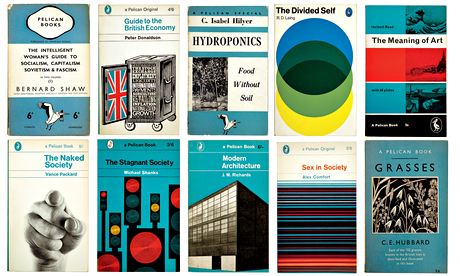As the non-fiction Penguin imprint relaunches, Paul Laity tells the story of the blue‑spined books that inspired generations of self-improvers – and transformed the publishing world

Pelican covers, from George Bernard Shaw to the designs of the 70s. Photograph: Courtesy Penguin Books
"The really amazing thing, the extraordinary eye-opener that surprised the most optimistic of us, was the immediate and overwhelming success of the Pelicans." So wrote Allen Lane, founder of Penguin and architect of the paperback revolution, who had transformed the publishing world by selling quality books for the price of a packet of cigarettes. Millions of orange Penguins had already been bought when they were joined in 1937 by the pale blue non-fiction Pelicans. "Who would have imagined," he continued, "that, even at 6d, there was a thirsty public anxious to buy thousands of copies of books on science, sociology, economics, archaeology, astronomy and other equally serious subjects?"
His instinct was not only commercially astute but democratic. The launching of the Penguins and Pelicans ("Good books cheap") caused a huge fuss, and not simply among staid publishers: the masses were now able to buy not just pulp, but "improving", high-calibre books – whatever next! Lane and his defenders argued that owning such books should not be the preserve of the privileged class. He had no truck with those people "who despair at what they regard as the low level of people's intelligence".
More

Penguin poster designed by William Grimmond. Photograph: Penguin
His instinct was not only commercially astute but democratic. The launching of the Penguins and Pelicans ("Good books cheap") caused a huge fuss, and not simply among staid publishers: the masses were now able to buy not just pulp, but "improving", high-calibre books – whatever next! Lane and his defenders argued that owning such books should not be the preserve of the privileged class. He had no truck with those people "who despair at what they regard as the low level of people's intelligence".
More

Penguin poster designed by William Grimmond. Photograph: Penguin
No comments:
Post a Comment